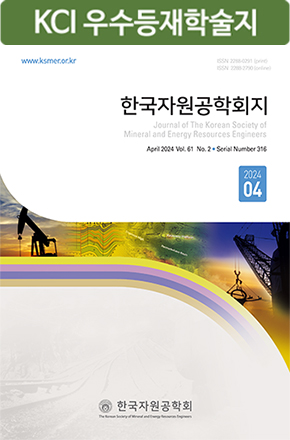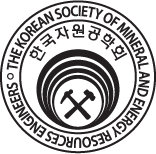Research Paper
- Amaral, J. C. and Morais, C.A., 2010, “Thorium and uranium extraction from rare earth elements in monazite sulfuric acid liquor through solvent extraction,” Minerals Engineering, Vol. 23, pp. 498-503.
- Dubinin, M. M., Zaverina, E. D. and Radushkevich, L. V., 1947, “Sorption and structure of active carbons. I. Adsorption of organic vapors,” Zhurnal Fizicheskoi Khimii, Vol. 21, pp. 1351-1362.
- Freundlich, H. M. F., 1906, “Over the adsorption in solution,” J. Phys. Chem., Vol. 57, pp. 385-470.
- Fukukawa, B. H., 2003, “Activated carbon water treatment technology and management,” Dong hwa Technol., pp. 69.
- Ghodbane, I., Nouri, L., Hamdaoui, O. and Chiha, M., 2008, “Kinetic and equilibrium study for the sorption of cadmium (II) ions from aqueous phase by eucalyptus bark,” J. of hazardous materials, Vol. 152, No. 1, pp. 148-158.
- Grenthe, I., Fuger, J., Konings, R. J. M., Lemire, R. J., Muller, A. B., Cregu, C. N.-T. and Wanner, H., 1992, Chemical Thermodynamics Of Uranium, Vol. 1, North-Holland, Amsterdam, Netherlands, pp. 55-58.
- Guillaumont, R., Fanghänel, T., Fuger, J., Grenthe, I., Neck, V., Palmer, D. A., Rand, M. H., Mompean, F. J., Illemassene, M., Domenech-Orti, C. and Ben-Said, K., 2003, Update on the chemical thermodynamics of uranium, neptunium, plutonium, americium and technetium, Vol. 5, ELSEVIER, Amsterdam, Netherlands, pp. 64-75.
- Helfferich, F., 1962, Ion exchange, McGraw-Hill, New York, pp. 260-162.
- Ho, Y. S. and Mckay, G., 1998, “The kinetics of sorption of basic dyes from aqueous phase by eucalyptus bark,” The Canadian journal of chemical engineering, Vol. 76, No. 4, pp. 822-827.
- KIGAM(Korea Institute of Geoscience and Mineral Resources), 1999, “Study on the radionuclides concentrations in groundwater,” NIER(National Institute of Enviromental Research), pp. 6-33.
- Kim, J. T. and Park, S. K., 2004, “Adsorption of Uranium(Ⅵ) Ion Utilizing Cryptand Ion Exchange Resin,” ANALYTICAL SCIENCE & TECHNOLOGY, Vol. 17, No. 2, pp. 91-97.
- Lagergren, S., 1898, “About the theory of so-called adsorption of soluble substances,” Kunglia Svenska Ventenskapsakademiens Handlingar, Vol. 24, No. 4, pp. 1-39.
- Langmuir, I., 1918, “The adsorption of gases on plane surfaces of glass, mica and platinum,” J. of the American Chemical Society, Vol.40, No.9, pp. 1361-1403.
- Lam, O. P., Heinemanna, F. W. and Meyer, K., 2010, “A new diamantane functionalized tris(aryloxide) ligand system for small molecule activation chemistry at reactive uranium complexes,” Comptes Rendus Chimie, Vol. 13, pp. 803-811.
- Na, C. K., Han, M. Y. and Park. H. J., 2011, “Applicability of theoretical Adsorption models for studies on adsorption properties of adsorbents(1),” J. of Korean Society of Environmental Engineers, Vol. 33, No. 8, pp. 606-616.
- Marino, G. P., 2008, “European uranium forum,” Uraniumletter International, http://www.goldletterint.com.
- Park, S. K., Bae, J. S., Hwang, I. S., Lee, J. Y., Yoon, H. S., Kim, J. S. and Han, C., 2011, “Adsorption/Desorption Behavior of Uranium by Synthetic Ion Exchange Resin Using Tetramethylammonium Hydroxide Pentahydrate ((CH3)4NOH·5H2O),” J. of Korean Society For Geosystem Engineering, Vol. 48, No. 4, pp.473-482.
- Rahmati, A., Ghaemi, A. and Samadfam, M., 2012, “Kinetic and thermodynamic studies of uranium (VI) adsorption using Amberlite IRA-910 resin,” Annals of Nuclear Energy, Vol. 39, No. 1, pp. 42-48.
- Singh, D.P., Shishodia, N., Yadav, B.P. and Rana, V.B., 1997, “Synthesis and characterization of bivalent metal complexes of a tetradentate N6 macrocyclic ligand,” Polyhedron, Vol. 16, pp. 2229-2232.
- Srncik, M., Kogelnig, D., Stojanovic, A., Körner, W., Krachler, R. and Wallner, G., 2009, “Uranium extraction from aqueous solutions by ionic liquids,” Applied Radiation and Isotopes, Vol. 67, pp. 2146-2149.
- Stumm, W. and Morgan, J. J., 1995, Aquatic chemistry: chemical equilibria and rates in natural waters(3rd ed.), JOHN WILEY & SONS, NEW YORK, NY 10158(USA).
- Temkin, M. I., 1941, “Adsorption equilibrium and the kinetics of processes on nonhomogeneous surfaces and in the interaction between adsorbed molecules,” J. Phys. Chem. (USSR), Vol. 15, pp. 296-332.
- Publisher :The Korean Society of Mineral and Energy Resources Engineers
- Publisher(Ko) :한국자원공학회
- Journal Title :Journal of the Korean Society of Mineral and Energy Resources Engineers
- Journal Title(Ko) :한국자원공학회지
- Volume : 50
- No :3
- Pages :377-386
- DOI :https://doi.org/10.12972/ksmer.2013.50.3.377



 Journal of the Korean Society of Mineral and Energy Resources Engineers
Journal of the Korean Society of Mineral and Energy Resources Engineers








